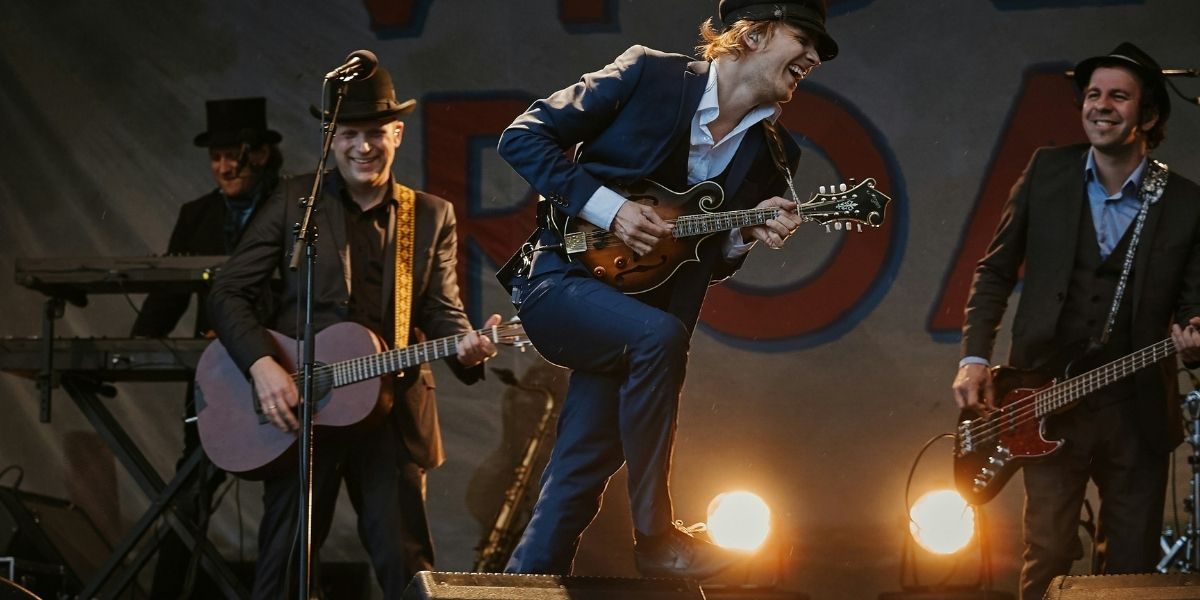Music has long been known as a universal language that transcends borders, language barriers, and cultural divides. It is a powerful form of expression that can evoke deep emotions, connect individuals from diverse backgrounds, and foster understanding and unity. Throughout history, music has bridged cultural divides, allowing people from different cultures and walks of life to find common ground and connect on a deeply emotional level. In this article, we explore how music acts as a unifying force, its ability to transcend cultural boundaries, and the ways in which it can build bridges of understanding between people from all over the world.
Read Also: Seattle’s Logistics Sector: Navigating Global Trade
The Power of Music to Unite
The notion that music bridges cultural divides is rooted in its ability to convey emotions and stories without the need for words. At its core, music is an expressive art form that communicates human experiences, whether it’s joy, sorrow, hope, or love. People of all cultures, regardless of their native language, can relate to the emotional undertones of music. The rhythm, melody, and harmony speak directly to the heart, making music a powerful tool for breaking down barriers between different cultures and societies.
1. Music as a Shared Emotional Experience
One of the reasons music bridges cultural divides so effectively is because of its ability to evoke universal emotions. While each culture may have its own unique musical traditions, the emotions that music elicits are often universally understood. Whether it’s the exuberant beats of African drumming, the soothing tones of classical music, or the heart-pounding rhythm of Latin dance, music creates a shared emotional experience that transcends language.
For example, when people listen to a song that resonates with their emotions—whether it’s a joyous anthem or a melancholic ballad—they are experiencing the same emotional connection, regardless of where they come from. This shared emotional experience creates a bond between people, fostering empathy and understanding across cultures.
2. Cultural Exchange and Collaboration Through Music
In our increasingly globalized world, music plays a crucial role in cultural exchange and collaboration. Musicians and artists from different cultural backgrounds often come together to create new, hybrid forms of music that blend various traditions and styles. This process not only enriches the music itself but also promotes cultural appreciation and respect.
Collaborations like these—such as the fusion of Western pop music with African rhythms or the blending of classical Indian ragas with jazz improvisation—demonstrate how music bridges cultural divides by celebrating diversity and fostering mutual respect. When musicians from different backgrounds share their art and creativity, they not only broaden their own understanding of each other’s cultures but also provide their audiences with a unique opportunity to experience something new.
Music’s Role in Social Movements
Throughout history, music has bridged cultural divides by serving as a powerful tool in social movements. From the civil rights movement in the United States to anti-apartheid protests in South Africa, music has been used as a rallying cry for justice, equality, and freedom. Songs like Bob Dylan’s “Blowin’ in the Wind,” Nina Simone’s “Mississippi Goddam,” and Miriam Makeba’s “Pata Pata” were more than just songs—they were anthems that united people in their shared struggle for change.
These songs not only highlighted social issues but also created a sense of solidarity among individuals from different cultural and ethnic backgrounds. Through music, people could express their shared experiences, hopes, and desires for a better world, making it a unifying force in moments of social and political upheaval. Music became a universal symbol of resistance, compassion, and a call for collective action, bringing together individuals from diverse cultural backgrounds who otherwise may not have found common ground.
Music Festivals and Cultural Celebrations
Another way music bridges cultural divides is through music festivals and cultural celebrations, where people from different cultural backgrounds come together to enjoy and celebrate music. Events like the Global Citizen Festival, the Montreux Jazz Festival, or the Cape Town International Jazz Festival attract people from around the world to experience the diversity of global music. These festivals promote cross-cultural understanding and appreciation, creating spaces where music serves as the common thread that unites people, regardless of their cultural origin.
Similarly, cultural celebrations like Diwali, Chinese New Year, or Carnival, which feature music as a central component, provide an opportunity for people from various cultural backgrounds to come together and learn about one another’s traditions. Music is often the heart of these celebrations, offering a way for people to connect, share, and learn through sound, dance, and rhythm.
The Role of Technology in Bridging Cultural Divides
In the digital age, technology has further amplified music’s ability to bridge cultural divides. Streaming platforms like Spotify, YouTube, and Apple Music allow people to access music from every corner of the globe, making it easier than ever for individuals to explore new genres, artists, and cultural sounds. Social media platforms like TikTok, Instagram, and Twitter allow music to go viral and become part of a global cultural conversation.
These platforms have helped break down geographic and cultural barriers, allowing artists to connect with global audiences, share their unique musical traditions, and engage in cross-cultural collaborations. Technology has also made it easier for fans to discover and appreciate music from different cultures, expanding their understanding of the world and the rich diversity that exists within it.
Music as a Tool for Education and Empathy
Beyond entertainment, music bridges cultural divides by serving as an educational tool. Learning about different musical traditions and styles allows individuals to gain insight into the histories, values, and experiences of other cultures. Music classes, workshops, and documentaries are excellent ways to promote cultural awareness and understanding, helping people appreciate the stories and messages behind the music.
Furthermore, music fosters empathy by allowing individuals to step into the shoes of others through sound. For example, listening to a song from a culture different from your own can offer a glimpse into the emotions, struggles, and triumphs that shape that community’s identity. This emotional connection fosters empathy and compassion, breaking down stereotypes and building bridges between diverse cultures.
Read Also: Seattle’s Waterfront: Where City Life Meets the Bay
The Enduring Power of Music to Bridge Cultural Divides
Music bridges cultural divides in ways that words alone cannot. Its ability to convey emotion, tell stories, and create shared experiences makes it a powerful tool for unity. Through collaborations, festivals, social movements, and education, music continues to transcend cultural boundaries and build understanding among people from diverse backgrounds. As we continue to celebrate the richness of global musical traditions, we can foster a deeper sense of connection, empathy, and harmony in our increasingly interconnected world.
Whether through a shared song or a cross-cultural collaboration, music reminds us that, despite our differences, we all speak the same universal language of rhythm, melody, and harmony.






